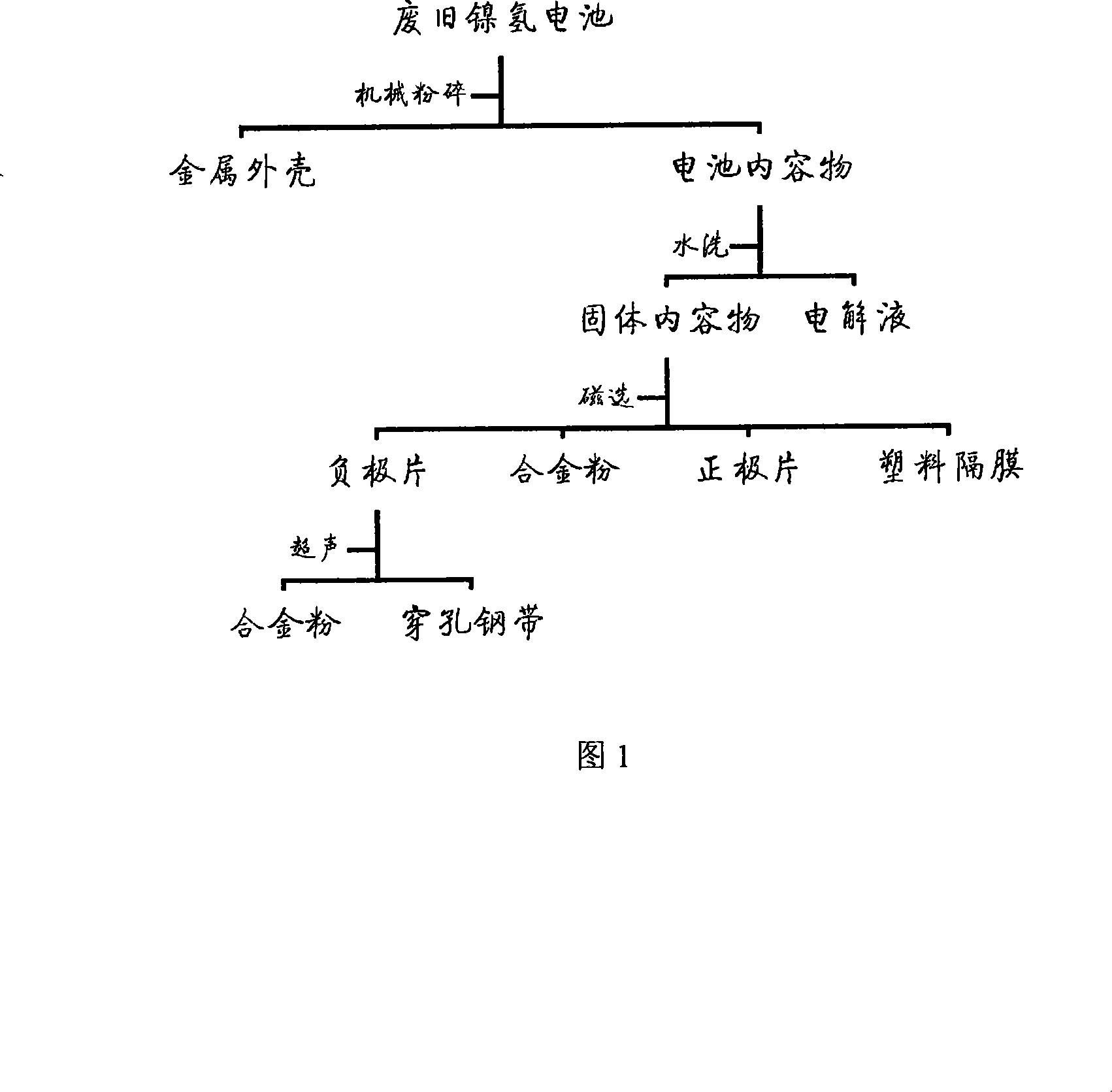Resource separation and recycling production method for waste nickel hydrogen battery content
A technology of nickel-metal hydride battery and production method, applied in battery recycling, solid waste removal, waste collector recycling, etc., can solve problems such as high cost, secondary pollution, complicated process, etc., and achieve the effect of retaining usability
- Summary
- Abstract
- Description
- Claims
- Application Information
AI Technical Summary
Benefits of technology
Problems solved by technology
Method used
Image
Examples
Embodiment Construction
[0019] 1. Mechanical breaking of battery:
[0020] In order to make post-processing easier, the crushing of the battery should be done in a gentler way. In the laboratory, a hacksaw can be used to saw open the battery shell that has discharged residual power; in industry, a machine that can peel off the plastic and metal shell of the battery that has discharged residual power is used to remove the battery. The metal casing is separated from the battery core.
[0021] Existing nickel-metal hydride batteries generally use positive and negative electrode active materials to be coated on foamed nickel and perforated steel strips, and a separator is used to separate the electrode materials from direct contact. In order to facilitate the subsequent processing, the electrode sheet should be cut into pieces of 1cm to 5cm square.
[0022] 2. Separation of electrolyte from other solid contents
[0023] The electrolytic solution contained in the battery contents can be washed out by using wa...
PUM
 Login to View More
Login to View More Abstract
Description
Claims
Application Information
 Login to View More
Login to View More - R&D
- Intellectual Property
- Life Sciences
- Materials
- Tech Scout
- Unparalleled Data Quality
- Higher Quality Content
- 60% Fewer Hallucinations
Browse by: Latest US Patents, China's latest patents, Technical Efficacy Thesaurus, Application Domain, Technology Topic, Popular Technical Reports.
© 2025 PatSnap. All rights reserved.Legal|Privacy policy|Modern Slavery Act Transparency Statement|Sitemap|About US| Contact US: help@patsnap.com

